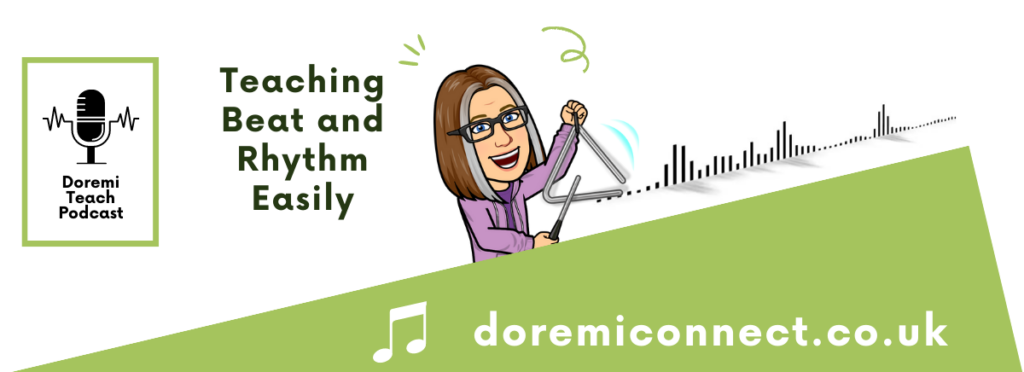Teaching Beat and Rhythm Easily

Do you have trouble explaining the difference between pulse and rhythm?
Get physical first with this fun, simple song Helen uses in both her Kodály Musicianship and Piano lessons. Your students will FEEL the difference between beat and rhythm and you won’t get tangled up with ineffective, wordy explanations.
Step 1 - Teach the song and play the game
This song doesn’t need much teaching! Your students are likely to have heard it in the playground but even if they haven’t it’s super catchy. It uses that playground melody that forms the basis of so many songs used by Kodály teachers.
Copy cat, copy cat
Sitting on the doormat
so so mi / so so mi / so so mi la so mi
Pulse Game
You sing the song and do a pulse action. Your student has to stand still, in silence!
Your student sings and copies your action
You sing again with a new action
Guess what… your student sings and copies your action
This is actually harder than it looks. Not because it’s complicated, just because children can’t resist joining in. Do insist that they wait though. Not only is it important for them to develop their part-work skills, and patience, it’s also really fun when they get caught out and realise they accidentally joined in. Lots of giggle potential.
Top Tip Make sure your pulse actions are steady and even and use a large motion so the children aren’t tempted to tap the rhythm instead.
Step 2 - Swap Parts
The following week you can repeat the game, but this time after a few repetitions get your student to lead and choose the action. Remember by keeping the motion large they are more likely to do the pulse and not the rhythm.
This is also a great creative activity since they’re choosing their own actions – one of the first improvisation skills (see our Top 5 Simple Improvisation Activities for Kodály Piano Teachers).
Top Tip Letting them lead the activity is a great way to assess their understanding.
Step 3 - Spot the Difference
My students know the term pulse by now, and that it’s steady and even. So mix up your actions by sometimes doing the pulse and sometimes the rhythm. Your student must ONLY copy if your actions are pulse actions.
And swap!
Top Tip Remember to keep your pulse actions large and your rhythm actions smaller
Step 4 – Present “The way the words go”
One of the rhythm actions I always use is to move my hand as if it’s a hand puppet. With my fingers tapping the rhythm on my thumb as if it’s a bird singing.
“Well done, you didn’t copy because I didn’t show the pulse. What DID I show?”
“The words of the song!”
“That’s right! I was showing the way the words go. That’s different to the pulse.”
Top Tip Use this rhythm action for other songs so they are familiar with the idea. Helen uses it for Cuckoo too, to show that it’s in two parts.
Step 5 - Present Rhythm
Since we’re now so good at identifying the pulse or the way the words go, we can present rhythm with ease. We’ve felt what rhythm feels like, felt how it’s different from the steady and even pulse. We’ve even defined our definition! They totally understand the concept of “the way the words go”. So all we have to do is associate all that with the word rhythm.
“Rhythm is the way the words go. It’s a mixture of long and short sounds.”
Want more fun? You can switch the rules around – now ONLY copy if I do a RHYTHM action!
Top Tip If your student has an idea for a game, make sure you listen. Sometimes they can be really inspiring!
Success!!
We have so much success with this fun approach we were desperate to share it. Why not try it with YOUR students and we’d love to hear how you get on.
Want More?
Grab my Free Kodály Treasure Chest, which includes more ideas for teaching rhythm.
Hello! Where I can “like” what I just listed?